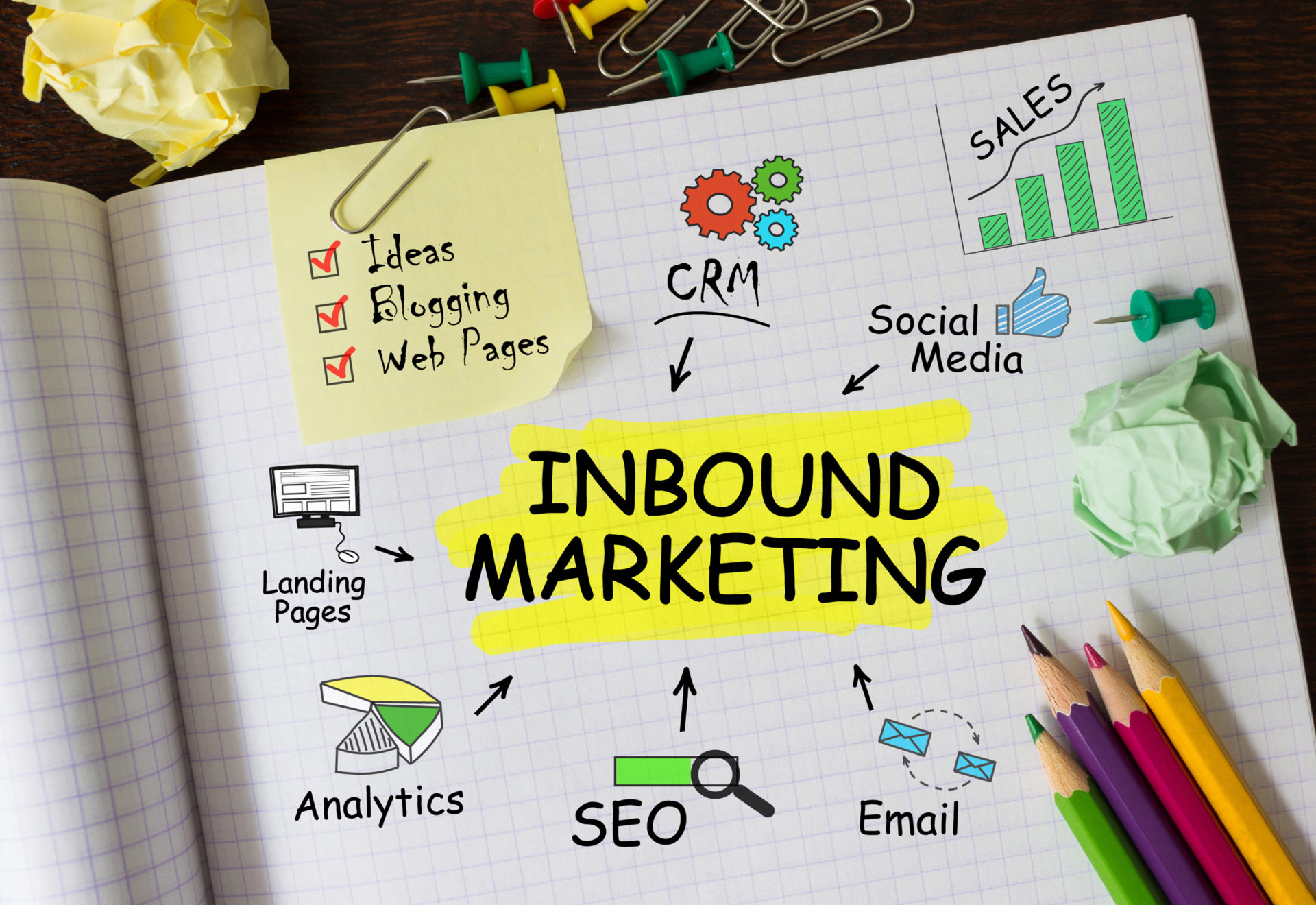
In a climate where companies are competing aggressively for talent and applicants have their pick of open positions, inbound recruiting is an important method for maintaining a high-quality pool of candidates.
In today’s market, prospective employees should not be viewed as job seekers. Instead, like highly regarded free agents in professional sports, they are coveted consumers with abundant choices for their next career move. Recognizing this, many companies have shifted to an inbound recruitment strategy.
Considering that the current job market is talent-driven, inbound recruitment offers a long-term recruiting and hiring strategy designed to build your employer brand and consistently grow your talent base.
What is Inbound Recruitment?
Inbound recruitment involves attracting the interest of job seekers through insightful blog posts, effective search engine optimization (SEO), relevant social media outlets, and other types of content marketing. Think of inbound recruitment as a mix of employer branding and recruitment marketing that piques the interest of job seekers that are ideally suited for your company’s career opportunities.
While outbound marketing requires purchasing ads, building email lists and crossing your fingers for leads, inbound marketing emphasizes writing remarkable content that brings candidates to your company and explains to them how they can thrive as part of your team. If you align the content with the interests of job seekers, it increases the chances of turning initial interest into prospects who are hired and retained for the long term.
Companies that author and implement a thorough inbound recruitment strategy consistently hire extraordinary employees without incurring the prohibitive costs of traditional outbound recruitment. Organizations benefit from a healthy bottom line accompanied by a happy and productive team, and positive brand awareness.
The Difference Between Inbound And Outbound Recruiting
As their names suggest, inbound recruiting focuses on attracting candidates into your talent pipeline while outbound recruiting requires you to reach out and make the first contact with candidates.
Think of inbound recruiting like fishing on a lake. The company baits the hook and provides an attractive lure, but it’s up to the candidate (the fish, in this scenario) to swim over and bite.
If we’re keeping with the fishing metaphor, outbound recruiting is like trawling, which uses a big net attached to a boat. There’s no lure and no waiting on the fish to approach. Instead, the company goes out, casts the net, and catches them.
Both methods are effective ways to catch fish, and each has its own advantages. Likewise, both inbound and outbound recruiting can be useful strategies in a company’s overall approach to talent acquisition.
Inbound recruiting pros
- Is a long-term strategy
- Requires an up-front investment of time/resources
- Can attract candidates for years to come after the initial investment is made
Outbound recruiting pros
- Is a short-term strategy
- Requires a continuous investment of resources/manpower to maintain
- Produces results in the moment
If you want to be a company candidates aspire to work at–rather than one where filling openings is a struggle–your efforts should be heavily focused on inbound recruiting.
Why is Inbound Recruitment Effective?
Job seekers perform in-depth research about potential employers, which is why recruiters must think like digital content marketers. Just as marketers capture and convert leads into sales with targeted content, creative recruiters can incorporate the same tactics to enhance their talent pool.
Inbound recruitment creates a phenomenal experience for prospective team members through employer branding, which is defined by how our company is perceived from the viewpoints of candidates and team members.
Job seekers become familiar with your business through their personal knowledge and experience of your products and/or services. Employer branding impacts every aspect of your company, including how you communicate as a business online, the comments your employees write on public sites, the content of your job postings, and the salaries, benefits, and perks you offer.
Outstanding employer branding helps attract and retain noteworthy talent.
Through strong employer branding, inbound recruitment:
- Cultivates a larger pool of accomplished and experienced applicants
- Requires less upfront, individual effort than outbound recruitment (which demands intensive scouting and tireless communication that yields a smaller number of ideal candidates)
- Creates extensive awareness of your company and your opportunities by producing content that is valuable to candidates
- Allows companies to closely target job seekers in a way that outbound recruitment cannot achieve
- Provides a residual effect for attracting talent over an indefinite time frame
Of course, even when you have the attention of ideal prospects, that does not guarantee they will apply. When you capture their attention, it’s vital to transform that awareness into action.
How Do You Implement an Inbound Recruitment Strategy?
Inspiring action through inbound recruitment is attained by developing content that showcases why your company is a sterling employer.
Examples of effective inbound recruitment strategies include employee spotlight articles, company blogs, social media posts, video interviews, infographics, and newsletters. These foster relationships with candidates so you will have top-of-mind awareness when they search for opportunities. Providing an inside glimpse of what it’s like to work at your company permits job seekers to consider how they align with your culture.
Inbound recruitment gives prospects the ability to envision themselves as part of your organization’s team.
Once a candidate is intrigued by the possibility of joining your staff, you are tasked with building that relationship. You can spearhead this with these tips:
Consider what you want to achieve
Before launching your inbound recruitment campaign, it is important to craft a clear and detailed plan that includes your objectives. What do you want to accomplish? What candidates do you want to attract and hire? Just as a real estate agent does not target first-time homebuyers with articles about downsizing for empty nesters, a company that is interested in filling entry-level positions should not focus on content that emphasizes management roles.
Are you striving to find spectacular and seasoned senior-level managers? That requires a different approach. Successful inbound recruitment strategies target candidates at all career stages. Again, think like a marketing professional who is developing a multi-pronged campaign to generate awareness for your product or service.
Understand your target market
To connect with prospects through targeted content, you must cultivate a deep understanding of your target audience. This is where candidate personas are appropriate.
A candidate persona is a profile of your ideal hire for a role. The profile features a list of essential skills, education, experience, career goals, key motivators, and personality traits.
Candidate personas impact your inbound recruiting strategy at every level, from the content you author to the platforms used for generating awareness. Ready to build a candidate persona? Simply gather data from all available sources. Then identify common traits and data points that indicate a person is likely to be successful in a particular role. An ideal first source of data is top performers who are already in the position you are looking to fill. Identify and define the trends in skills, traits, characteristics, education, certifications, and experience that make these candidates successful.
Nurture your ideal candidates
You might be familiar with the concept of a sales funnel and the various objectives as you move candidates through it: attracting leads, nurturing them, and converting them to customers. Inbound recruiting is structured in a similar way, except instead of customers, we’re dealing with candidates.
So, once you attract interest from a wide pool of job seekers, it is time to nurture them and further enhance their interest, eventually converting them into applicants.
Encourage candidates to finish applications with automated emails that remind them to complete unfinished applications. Send articles, videos, and other company news to candidates. Share your company culture by showing the social side of your firm through photos, videos, and news of events like corporate retreats, conferences, holiday parties, and team-building exercises. Brainstorm targeted content to reach candidates. Follow up with the most recent job openings and invite job seekers to hiring fairs and training events directly related to their interests.
A candidate might not be the perfect fit at the moment, but they may be exactly who you need at some point soon. Keep in touch with exceptional prospects, even if you do not have an ideal opening right now.
Related: Ways To Hire Faster By Nurturing Candidates
Find out where your candidates reside online
Effective inbound recruitment attracts quality prospects, but that objective is not realistic if the candidates cannot find your content.
Determine where your candidates are likely to be online, and the platforms where they reside. Also, it helps to learn where they are not likely to live so you can avoid those forums.
SEO allows you to accomplish these goals. Complete a keyword analysis. Ask how popular are certain job titles, which keywords attract the most traffic to your job postings, and where does your company rank for job title keywords compared to competitors?
Use targeted keywords to optimize your job content. Include the job title, company name, location, and other relevant keywords. It is important to use easily understood language in job descriptions for search engines and job seekers. Another SEO tip is to feature engaging content on your careers page so prospects are interested from the moment they arrive. Your page will rank higher the longer candidates stay.
Quality content is king
When you determine your target market, where they likely live online, and what type of content interests them, start crafting captivating copy. Post intriguing ads on relevant job boards. Write blog posts that are interesting and relevant. Use SEO-friendly keywords so content is easily discovered. Author white papers, case studies, eBooks, and infographics that demonstrate who your company is and why it is an ideal place to not only get a job but most importantly to grow in a career.
Consistent messaging instills a warm feeling of familiarity when candidates connect with your company’s website, social media, hiring portal, or other content marketing avenues. Project a consistent and desired image through your words and tone of voice across all marketing channels.
Measure your inbound recruitment strategy success with analytics
You can discover what is working and what can benefit from improvement through web analytics and recruiting metrics. It is important to find out where the most qualified job seekers originate from, what job posts generate the most applicants, and what are the most effective marketing channels among other questions.
Paying attention to analytics also helps you find out how much time and money you spent on your campaigns. Inbound recruitment strategies evolve over time, just as new trends arise. Analyzing results allows you to study how you can improve.
In conclusion, inbound recruitment is an ongoing process that requires the same creativity and insight as a company’s marketing and branding strategy. Finding qualified candidates in today’s talent-driven job market is not a simple task, and it demands more engaging ways to reach job seekers than traditional outbound recruitment.
Companies that continue to optimize their inbound recruitment strategy are ideally positioned to attract exceptional candidates and fill open roles for the long term. Remember, you are recruiting premium talent. These prospects have a multitude of options, and organizations that understand outstanding inbound recruitment techniques have an advantage over competitors who focus on outbound recruitment of yesterday.
Related: How To Leverage Data To Improve Your Recruitment Process
Looking to Fill Your Vacant Positions? Partner with 4 Corner Resources Today!
We are equipped to source and attract qualified candidates for your vacant position(s). We utilize tactics such as inbound recruitment to connect with candidates that are a perfect fit for your company. Our staffing experts will assist with all your recruitment needs!
Learn more about the services we offer and contact us today!


